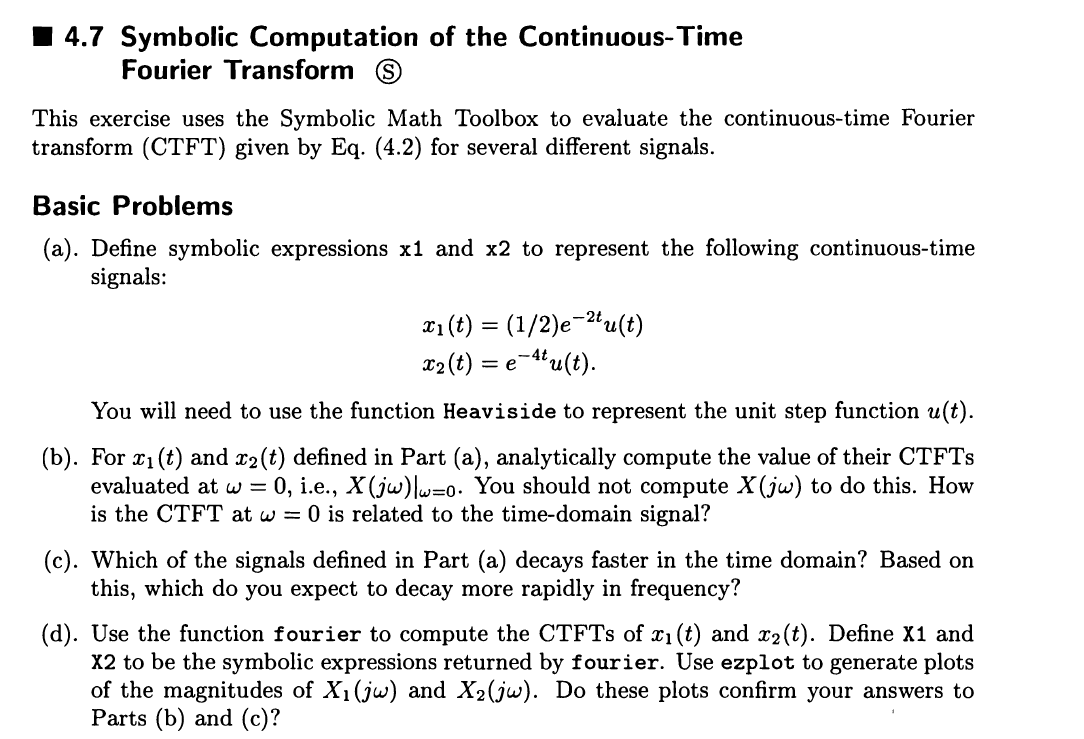using MATLAB signals and systems

14.7 Symbolic Computation of the Continuous-Time Fourier Transform This exercise uses the Symbolic Math Toolbox to evaluate the continuous-time Fourier transform (CTFT) given by Eq. (4.2) for several different signals. Basic Problems (a). Define symbolic expressions x1 and x2 to represent the following continuous-time signals: 21(t) = (1/2)e-ºu(t) x2(t) = e-4tu(t). You will need to use the function Heaviside to represent the unit step function u(t). (b). For xi(t) and x2(t) defined in Part (a), analytically compute the value of their CTFTs evaluated at w= 0, i.e., X(jw)|w=o. You should not compute X(jw) to do this. How is the CTFT at w = 0 is related to the time-domain signal? (c). Which of the signals defined in Part (a) decays faster in the time domain? Based on this, which do you expect to decay more rapidly in frequency? (d). Use the function fourier to compute the CTFTs of xi(t) and x2(t). Define X1 and X2 to be the symbolic expressions returned by fourier. Use ezplot to generate plots of the magnitudes of Xi (jw) and X2(jw). Do these plots confirm your answers to Parts (b) and (c)?
没有找到相关结果